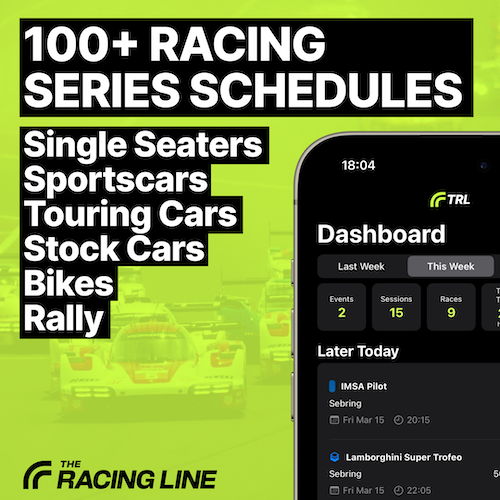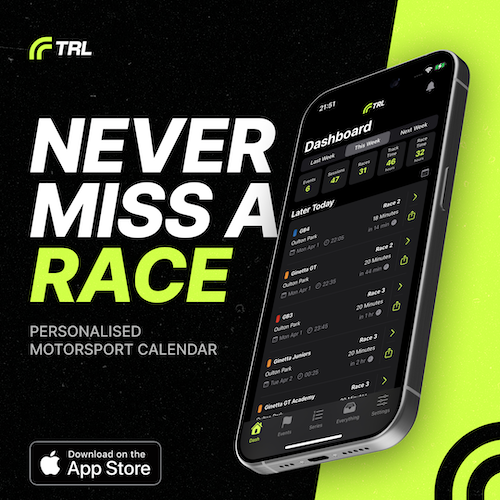The amount of data generated by the 24 Hours of Le Mans is enormous. The race’s CSV file, featuring every lap by every car, is 15,594 rows deep. And each row has a lot of data in it; there are 29 columns for every row. There’s too much to really go through in detail, properly, at least initially.
We’re going to do it in parts, here at The Racing Line. I’m not sure how many parts, but this is part 1, focusing on the Hypercars and breaking down pace for individual cars and teams. Part 2 will probably look at driver analysis, most likely in the Hypercar class, unless I find something more interesting to write about, or there’s a piece of data which catches my eye.
Anyway: onto the analysis!
Ferrari just had the edge over Toyota — but not by much
It was clear to anyone who watched the race that Ferrari and Toyota had the fastest cars. However, what was hard to tell was which car exactly was faster. Well, wonder no more!
Over the course of the race, when you take a car’s top 20% laps — thereby excluding laps done under local yellow/slow zone, full course yellow, or safety car, and laps impacted by traffic — and create an average of those laps, we see the #51 Ferrari, driven throughout the race by James Calado, Alessandro Pier Guidi and Antonio Giovinazzi, was the quickest car, by over two tenths compared to the #8 Toyota.
Certainly, the #51 Ferrari crew think they could have won; in their statements to the press all three drivers called it a ‘difficult race’ for them. Additionally, Calado told reporters, including The Racing Line, after the race that mistakes were made strategy wise.
“We made a few wrong decisions at the beginning of the race which cost us a lot, but it's difficult with the conditions with the rain and the sun, it was changing all the time,” said the Briton.
The team changed onto wet tyres at the beginning of the race when it began to rain for the first of many times during the race. Conversely, the #50 car stayed out on slicks with Ferrari splitting the strategy in order to have the best possible chance of having at least one car at the front of the pack.

An aside: when The Racing Line asked Calado whether this had been a driver or pitwall decision, he declined to answer, only saying, “It was a team decision.”
As it happened, the rain didn’t stay long and the decision to stay out on slicks was the correct one. This meant the #51 car, with Giovinazzi behind the wheel at the time, and others including the #6 Porsche of Andre Lotterer and #8 Toyota of Sebastien Buemi, lost a lot of time pitting twice, once for wets and then again for slicks as the track dried up. Not to mention the time lost on wets compared to the cars still on slicks.
Behind the #51 in the lead average pace-wise, it was super, super close between the #8 Toyota, #50 Ferrari, and #7 Toyota, with just 26 hundredths of a second separating the three.
However, when you combine the average lap times for Toyota and Ferrari (including Ferrari’s #83 satellite or ‘customer’ entry), a slightly different picture emerges: Toyota had an edge over Ferrari by just over half a tenth of a second.
Obviously these are such tight margins that it barely matters. With those kinds of differences, the drivers make the difference in their individual stints, taking into account what tyres the car’s on, how old they are, the weather conditions, traffic, and many other variables.
Porsche and Cadillac, who were seen as Ferrari and Toyota’s main challengers pre-race, and indeed emerged as such through the race, weren’t as quick. When looking at the individual cars, the fastest Porsche, the #6 of Kevin Estre, Andre Lotterer and Laurens Vanthoor, was six tenths off the leading #51 Ferrari.
The #2 Cadillac, of Alex Lynn, two-time winner Earl Bamber, and Indycar star Alex Palou, was the best part of a second. While these cars did lead the race for significant periods of time — the #2 Cadillac had a lead of well over ten seconds at one point, which in this race felt like quite a lot — ultimately they didn’t have the pace to win.
Alpine and BMW surprise everyone pace wise, but need more experience
The surprise of the race pace wise, at least the first part, was the good pace of the Alpine and BMW cars and teams.
After the Ferraris and Toyotas, the #15 BMW was the quickest car when top 20% average is considered, about half a second a lap off the leading Ferrari and over half a tenth up on the #6 Porsche behind.
While the two Alpines were some way down the individual car pace table, the fact they were relatively close together — separated by just over a tenth — meant they rocketed up the order when looking at teams in general, to third behind Toyota and Ferrari. They were, though, still seven and a bit tenths off Ferrari and seven tenths off Toyota.
Note that this doesn’t mean they were the third fastest team. Lots of other cars, from Porsche and Cadillac plus BMW, were quicker. And both didn’t run through the majority of the race, at least at pace comparable to what they were doing pre-issues.

It just means the Alpines had decent, consistent pace in the early part of the race.
And that last sentence is the key, for both BMW and Alpine. Early on both BMWs crashed, Marco Wittmann at the Forest Esses in the #15 and Robin Frijns at the Ford Chicanes in the art-car #20.
And Dries Vanthoor was booted off track into retirement by Robert Kubica in the #83 AF Corse Ferrari, an incident in which Vanthoor was largely blameless, although he had cut the track earlier in an attempt to stay ahead of Kubica and not get lapped.

After Frijns’ crash the #20 was in the pits for a long time, taking it out of any kind of contention. It did eventually get back out on track but was not classified as it did not complete the required number of laps compared to the winner.
In Alpine’s case, both cars failed within a short time of one another, around the 6 hour mark. Both had engine failures, a result of Alpine using the troublesome Mecachrome V6 that has caused so many issues in single-seater racing.
So: both had good potential but were marred by issues and problems. These are experienced teams with the knowhow to win this race, so they will come back stronger next year — no doubt about that.

Your personalised motorsport calendar
Session start times in your time zone, plus customisable notifications
The BoP worked
Finally, this analysis shows the Balance of Performance worked.
Now, before we discuss this in more detail, a word on BoP. It’s not ideal — we all know that. But if we want nine manufacturers in the top class, BoP is a necessary evil, giving us a race of this quality.
If you look at the table of individual cars, there are ten cars within a second of the #51 Ferrari, at the top of the pile. This puts Ferrari, Toyota, BMW, Porsche, Cadillac, and Alpine all within a second of each other. Lamborghini, Peugeot, and Isotta Fraschini are some way off at the bottom.
This is what the BoP was designed to do: get as many cars as possible into a window where they can race. And it did exactly that. I have no doubt that if the Alpines and BMWs, or at least one of each, had survived, they would have been up there fighting for the key positions.

Although they faded when it mattered, if the #2 Cadillac could lead a significant portion of the race in the last 6 hours or so, and pace wise they were almost a second on average off the #51 Ferrari… what could the #15 BMW, half that amount, have achieved? Or the #36 Alpine, just a few thousandths off the #2 Cadillac when looking at average pace?
We’ll never know. But it’s important to consider that the BoP is working as intended. There’s probably a longer, more in-depth article on this topic here… watch this space!
So what does all this mean?
Key takeaways:
- Ferrari and Toyota were on a very even playing field. Nothing really between them, at least at Le Mans, which is the track these cars were designed for.
- Porsche and Cadillac weren’t far off being in genuine contention.
- Alpine and BMW could have been in the discussion too had they not had issues, both of their own making and not, in the earlyish part of the race.
- Peugeot and Lamborghini need to find something if they want to compete.
- Isotta Fraschini finished the race, nine places ahead of where they started. For them that's as good as winning the race. Now they need to find how to extract more pace from that car.
We’ll be back part 2 of the analysis, looking at some individual drivers, cars and teams, later this week!
Download The Racing Line, your personalised motorsport calendar, on iOS today to get up to date session times and customisable notifications for over 100 different series, including single seaters, sportscars, rally, bikes, and much more.

